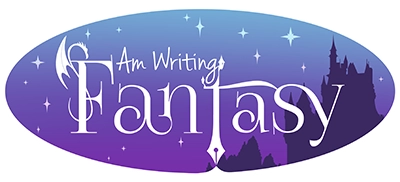How many characters are speaking in a paragraph of your writing? Really, the question is how many characters should be speaking in one paragraph?
We’ve been covering dialogue for a few posts now, and it is time to move on from ways of designating who is speaking with dialogue and action tags, plus adding to the scene’s mood with adverbs. This post is getting to the basics and really, it comes down to a formatting question and not your actual writing style or abilities.
Writing varies widely in how dialogue is handled.
Some authors have a line of dialogue and then start a new line/paragraph before getting into a description, action, or reply. Other authors smoosh all of that into one paragraph because it covers a single topic, and that is the purpose of a paragraph. Which is right?
The one that helps a reader most easily understand what is going on and who said what.
I hinted at this at the end of the post on action tags. If you are using action tags to designate a speaker, stick to one speaker a paragraph. Otherwise, the action and variety of characters can quickly become confusing.
Like this:
Erinn turned to stare at the young girl. “Where did you see that?” The merchant’s daughter dodged behind a crate of vegetables until only her blue eyes peered over the cabbages. “By the river.” “I don’t believe it,” Razen said, flatly. “The guards wouldn’t let an elf into the city.” “If it is true, we need to know why they are here.” Erinn tossed a coin to the youngster who caught it deftly. “Take us there and I’ll give you another.”
The paragraph is about one topic: what the girl saw. It works as a paragraph, but can you easily tell who is speaking between the variety of action and dialogue tags? Imagine if it was in the middle of a chapter and not isolated on a page as an example; would it take you a minute to double check who is speaking?
You want to avoid throwing a reader out of the flow of a story because they need to clarify what is happening.
If that occurs too many times, you’ll lose the reader. That is definitely not what you want! So maintaining the flow to keep the reader enthralled, and not guessing what is happening, is the key.
What about this example:
“What did you find?” Merrick crossed his arms as he stood in the empty room.
“Over there,” Ashyln nodded toward the far corner where a wall stone had been scratched free. She released the binding chains as Merrick peered into the exposed nook.
“No!” Merrick fell backwards, wrestling with the metal links as they wrapped around him, pinning his arms to his sides. “Release me.” A tremor threaded through his voice.
Ashyln bent over his prone form. “I told you I’d found the traitor.”
“I will find a way to stop you!”
Ashyln raised an eyebrow at the young man bound at her feet. “Good luck with that.” She pulled the heavy door closed, stopping when the tingle of magic brushed her hand. “Damn it!” She yanked at the unyielding door.
How easy is that to read? Is it better than piling it all together like this:
“What did you find?” Merrick crossed his arms as he stood in the empty room. “Over there,” Ashyln nodded toward the far corner where a wall stone had been scratched free. She released the binding chains as Merrick peered into the exposed nook. “No!” Merrick fell backwards, wrestling with the metal links as they wrapped around him, pinning his arms to his sides. “Release me.” A tremor threaded through his voice.
Ashyln bent over his prone form. “I told you I’d found the traitor.” “I will find a way to stop you!” he hissed. Ashyln raised an eyebrow at the young man bound at her feet. “Good luck with that.” She pulled the heavy door closed, stopping when the tingle of magic brushed her hand. “Damn it!” She yanked at the unyielding door.
Ok, that is an excessive example, but I’ve read paragraphs of dialogue on par with this level of scrunching. To help keep things clear, I added “he hissed.” But consider both as a reader, which is the easiest to buzz through and understand quickly?
Readers, especially of fantasy, are gobbling up tens of thousands of words, usually within hours.
Big blocks of long paragraphs feel and look dense. Adding in dialogue, especially broken by line breaks giving more white space on the page, is visually easier to take in and quicker to understand. The reader’s brain becomes trained that a line break means a switch of a speaker. So, they can read the scene at a faster pace when it is broken up.
Let’s go back to the first example and add in line breaks:
Erinn turned to stare at the young girl. “Where did you see that?”
The merchant’s daughter dodged behind a crate of vegetables until only her blue eyes peered over the cabbages. “By the river.”
“I don’t believe it,” Razen said, flatly. “The guards wouldn’t let an elf into the city.”
“If it is true, we need to know why they are here.” Erinn tossed a coin to the youngster who caught it deftly. “Take us there and I’ll give you another.”
The only con of breaking up dialogue into one speaker per line would be the extra page length it will give to your novel and that is only an issue when printing. For the extra dollars for the cost, I think it is worth the ease of reading.
What about you? Which method do you prefer and why? Let me know in the comments!










0 Comments